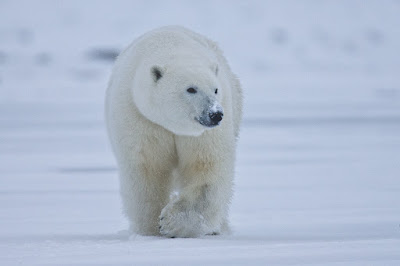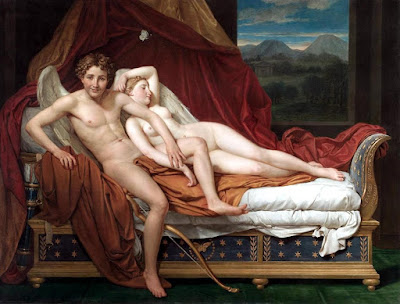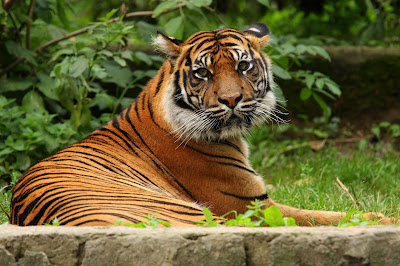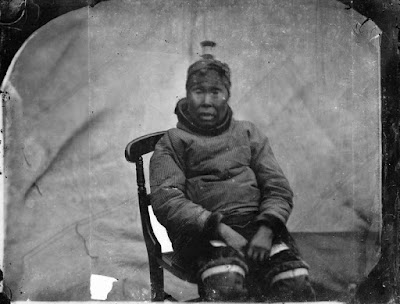Reading Notes: Inuit Folk Tales, Part A
For this week, I chose to read Inuit Folk Tales from Eskimo Folk-Tales by Knud Rasmussenwith illustrations by native Inuit artists (1921). My favorite story from this part was The Woman Who Had a Bear as a Foster-Son as I found this story touching and engaging.
The Woman Who Had a Bear as a Foster-Son:
A mother bear is killed and her cub is given to an old woman to raise. The old woman raises the bear and trains it to understand human speech and to act like a human. He is taught to take care when playing with children (and adults) and to help the hunters catch animals for food. The bear is almost killed by another group of hunters who mistake him for a normal bear, so he is made a collar in order to distinguish him from other bears.
Members of other groups vow to kill the bear, but he manages to stay safe, his foster-mother always reminding him to not harm humans unless they attack him. One day, the bear brings home a dead man, presumably because the man attacked him, and the old woman decides that it is best for the bear to leave so as to stay safe from humans looking to exact revenge for the slain man. She waits until there is not a cloud in the sky bigger than her hand before she sends the bear on his way, marking him with oil and soot, greatly grieving his departure.
The bear makes his way in the world and legends speak of a huge bear with a large dark mark on his side, the mark his foster-mother gave him to show her grief over his departure and to act as a sign to keep him safe from humans.
If I retell this story, I will have the story told from the perspective of the old woman. I will show how her love for the bear grows and how much she fears humans harming him, how much his departure pains her, and she will see him in the window of her house before quietly passing away one night a few years after he leaves her.
The Woman Who Had a Bear as a Foster-Son:
A mother bear is killed and her cub is given to an old woman to raise. The old woman raises the bear and trains it to understand human speech and to act like a human. He is taught to take care when playing with children (and adults) and to help the hunters catch animals for food. The bear is almost killed by another group of hunters who mistake him for a normal bear, so he is made a collar in order to distinguish him from other bears.
Members of other groups vow to kill the bear, but he manages to stay safe, his foster-mother always reminding him to not harm humans unless they attack him. One day, the bear brings home a dead man, presumably because the man attacked him, and the old woman decides that it is best for the bear to leave so as to stay safe from humans looking to exact revenge for the slain man. She waits until there is not a cloud in the sky bigger than her hand before she sends the bear on his way, marking him with oil and soot, greatly grieving his departure.
The bear makes his way in the world and legends speak of a huge bear with a large dark mark on his side, the mark his foster-mother gave him to show her grief over his departure and to act as a sign to keep him safe from humans.
If I retell this story, I will have the story told from the perspective of the old woman. I will show how her love for the bear grows and how much she fears humans harming him, how much his departure pains her, and she will see him in the window of her house before quietly passing away one night a few years after he leaves her.
Photo of polar bear in northern Canada, taken by Alan D. Wilson. Source: Wiki Commons




Comments
Post a Comment